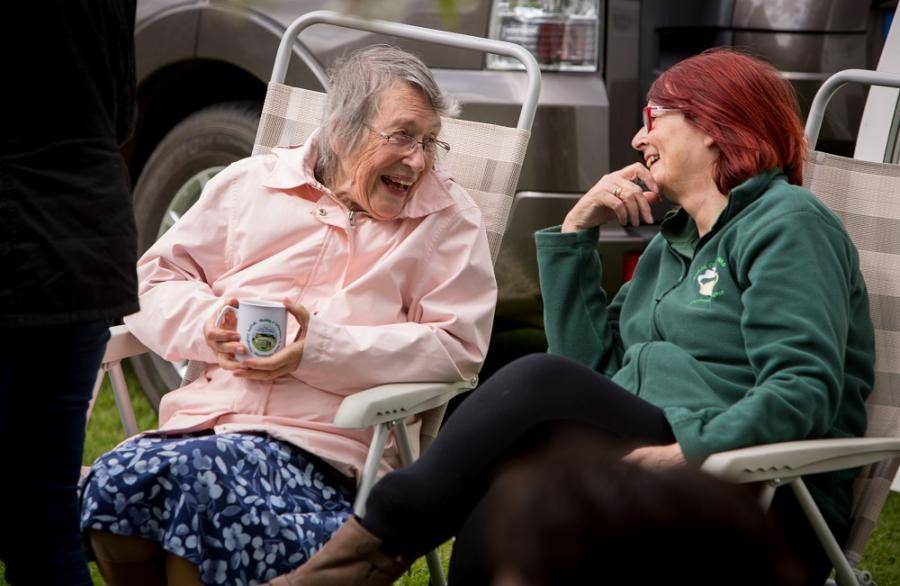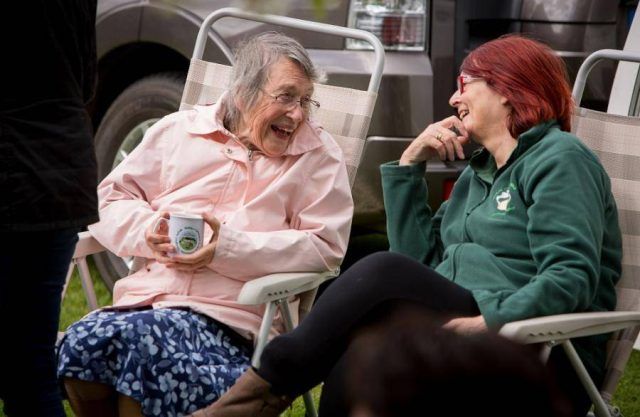
How to work with older people
The UK has an ageing population. There are more people over 65 than there are people under 16. What impact is this having on our communities? How does this affect community projects?
Key facts
- 4.9 million people over 65 in England take part in volunteering or civic engagement (52%)
- nearly 1.4 million people over 65 in England and Wales provide unpaid care for a partner, family, or others.
- 3.8 million people over 65 live alone. 70% of these people are women.
- about 6.4 million people over 65 have some form of hearing loss
Working with older people is good for your project
Older people make up around a fifth of the population. They know about all sorts of things; they might have practical skills such as carpentry, gardening and crafts; or know ways to make money stretch further. They can have a wealth of local knowledge about people and places. Many older people have spare time, something other sections of a community often don’t. But don’t assume they’re not already busy or that their time has no value.
If you’re looking for funding for your project then showing potential funders that you’ve engaged people of all ages in the developmental stages is crucial. Not only will it help you with your funding applications, but you will reap the benefits of getting everyone involved from the beginning. So arm yourself with some facts and figures.
Your project could support older people in your community
Social isolation is an issue that affects many older people. It can feel lonely living in a street where you are the only person not out working or at school during the day. It’s not uncommon for some older people to go for two or three days without speaking to anyone. Current government priorities are to encourage people to stay at home longer, putting off the move into assisted or residential care. This increases the risk of older people becoming isolated – even the once-regular visits by the postman and milkman are becoming less frequent.
Having the opportunity to share their skills means more than just doing good for the community; it’s good for someone’s health and wellbeing too. Your project could provide more opportunities for older people to get out and about, meet new people, learn new skills, gain more confidence and knowledge and feel more valued in their community.
How to involve older people
Older people aren’t just potential beneficiaries of your project, they have knowledge, experience and useful connections that can make a real difference to your project. There will be different levels of involvement for older members of the community, whatever the project, and there will be various times when you should think about how inclusive your activities should be.
- invite people to a coffee morning or tea party to chat about how they can help. You can do this during your initial planning stage, whilst you’re out and about with flyers or on a local radio chat about your idea or event. We often assume that everyone wants to be in a club or a group, but for some it’s a daunting vision, for others it’s just not their cup of tea. They may, however still enjoy the feeling that they have contributed in a meaningful way to their community.
- a good place to find older volunteers are the organisations which support volunteering such as Rotary; Lions clubs; Women’s Institutes and the Soroptimists. You can also use your local volunteer centre to find volunteers of all ages. Community Service Volunteers run a programme called the RSVP, or Retired Senior Volunteers Programme, which is aimed at encouraging people over the age of 50 to volunteer in their communities.
- ask people what they need to be able to volunteer or participate in your community. Everyone is different and will have different access requirements – the best way to find these out is to ask them the question and not make any assumptions on their behalf.
- design your activities, events or projects for your community with older people in mind. Plan activities in which they can engage easily with others, plenty of comfy seating, refreshments, good lighting, clear signage to toilets and other facilities. Consider venues with hearing loops and good sound systems, and be conscious of background noise in bigger spaces – can you separate groups into smaller, separate areas? Structure any activities to allow people to go at their own pace.
- don’t forget the ‘welcome’ factor. Is the entrance to the event clearly marked? Does it look appealing to older people? Are there smiling faces to welcome them?
Content written with thanks to Wendy Brewin from the Sensory Trust.
More like this

The cost of disconnected communities
Research shows that social isolation and disconnected communities puts demands on health services, policing, social care and the environment.
How we brought isolated people together — with coffee and a caravan!
Ann Osborn is the Director of the Rural Coffee Caravan in Suffolk. The mobile community cafe and information centre helps to alleviate isolation in…